One theme presented by supporters of the American empire is the U.S. military is invincible and can never lose unless stabbed in the back by impatient politicians. They claim the U.S. military never lost a battle during the entire Vietnam war. This was disputed by America's most decorated officer of that war, Col. David Hackworth, in his book "About Face." The U.S. military had every advantage, yet mistakes were made and battles lost.
Many battles were lost during the Vietnam war. There were more, but hiding embarrassing losses is standard procedure in any military organization. This is shown in that documentary about the Battle of Ong Thanh, where survivors tell how commanders tried to spin that loss as a victory, while the loss of FSB Ripcord was hidden from the public until 1985, and the slaughter at Ho Bo Woods wasn't recognized until 2011. This list does not include most battles lost by the Army of South Vietnam, whose forces were supported by American firepower.
Some veterans may be upset by these accounts because the U.S. military won nearly all other battles. However, this destroys the myth that no battles were lost. Some may claim these were too small to be counted as battles, yet the U.S. military and historians note most of these as battles. Others will argue that some were stalemates or incidents, and insist that a larger enemy "body count" meant victory, although it was common to greatly inflate enemy losses. Given our tremendous advantage in artillery and airpower, battles with large American causalities were losses, which led to the decision to withdraw from Vietnam. NVA Generals stated their objective was to inflict casualties on American forces, not to seize ground or avoid casualties themselves. In the late 1990s, American political spinmasters created an urban legend that former North Vietnamese General Vo Nguyen Giap admitted they had lost the war on the battlefield. There is no factual basis for this claim, yet this myth remains.
If attrition losses are important, the USA lost over 3600 fixed-wing aircraft in Vietnam, while the North Vietnamese lost only around 200, so who won the air war? Historical debates are common, but no sane person will claim that none of the 70 engagements listed above were losses. In contrast, the publication of this article is likely to generate more nominations from combat veterans. Wikipedia is often linked for details because it provides concise accounts with notes to sources. One can search the Internet for more information if they doubt what they read there. The point is that myths of American military invincibility may cause future miscalculations, and more lost battles. Ignoring these losses does great disservice to all those brave men who fought and died in these battles, as well as those now dying in Afghanistan.
Ironically, the USA succeeded in Vietnam only after its military left. Billions of dollars in annual aid were no longer required, while American GIs were no longer killed or maimed. There was no Chinese communist takeover of the region. In contrast, traditional rivalries resurfaced leading to a short, yet bloody, war between China and Vietnam in 1979. Without the distraction of fighting a war, the Vietnamese government was forced to address economic problems. It recognized the need for foreign trade and the value of free enterprise and has become a capitalistic economic power. American corporations now operate factories in Vietnam while United Airlines has daily flights. Likewise, the USA will never win in Afghanistan until its troops come home.
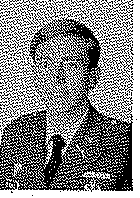
Given the ample historical facts available, many historians are amazed this "we never lost a battle" myth persists. Part of the blame lies with certain professors, who published this myth in articles like: "Lessons of History and Lessons of Vietnam" where in 1986 U.S. Army Major David H. Petraeus (left) wrote: "Vietnam planted doubts in many military minds about the ability of US forces to conduct successful large-scale counterinsurgencies. These misgivings do not in all cases spring from doubts about the capabilities of American troops and units per se; even in Vietnam, military leaders recall US units never lost a battle."Despite this dismal scholarship, Petraeus became a four-star General, partly due to marriage to the daughter of four-star Army General William Knowlton. General Petraeus was in charge of counterinsurgency operations in Iraq and Afghanistan, and since he failed to learn from the Vietnam war, he failed in those conflicts because of myths of U.S. military invincibility.
Internet research turns up these 70 lost battles of the Vietnam war:
1. Attack on Camp Holloway - In 1962, the U.S. Army established an airfield near Pleiku in central South Vietnam, which grew to include logistics elements and a large advisory group. In early 1965, some 300 Viet Cong slipped past ARVN guards and swept through the camp killing 8 Americans, wounding 126, destroying 10 aircraft and damaging 15 more. The Viet Cong withdrew to avoid battling reinforcements, with few losses.
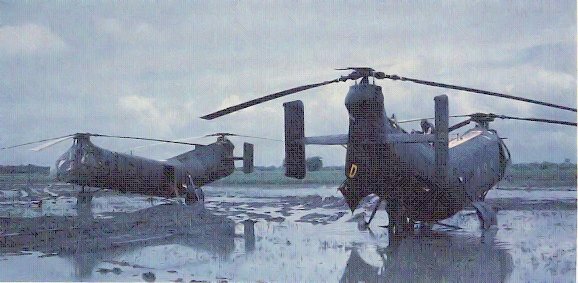 2. Battle of Ap Bac - In January 1963, American advisors launched a battle after they pressured reluctant South Vietnamese officers to use American air mobility assets to destroy the Viet Cong. The attack was a disaster in which the VC mauled a far larger force while shooting down five American helicopters (pictured) and damaging eight, while killing three Americans and wounding eight. 2. Battle of Ap Bac - In January 1963, American advisors launched a battle after they pressured reluctant South Vietnamese officers to use American air mobility assets to destroy the Viet Cong. The attack was a disaster in which the VC mauled a far larger force while shooting down five American helicopters (pictured) and damaging eight, while killing three Americans and wounding eight.
3. The Sinking of the USNS Card - This World War II aircraft carrier was later used as a transport for American military cargo. On May 2, 1964, it was moored in a heavily defended harbor in the Saigon River. Two VC commandos crawled down a sewer pipe and attached explosives to the ship. The explosion knocked a huge hole in the hull and killed five American crewmen, causing the ship to sink 45 feet to the river bed.
4. Attack on Bien Hoa Airbase - On November 1, 1964, Viet Cong squads shelled the airfield at Bien Hoa with mortars. The attack began shortly after midnight and lasted 20 minutes. It was estimated that there were three 81mm mortars. The attackwas effective as 27 aircraft were hit, including 20 B-57s (5 destroyed), 4 helicopters, and 3 A-1H Skyraiders. A fourth Skyraider crashed trying to take-off. Five Americans and two Vietnamese were killed, and 43 were wounded.
5. The Dragon's Jaw - On Apr 3, 1965, the U.S. military conducted the first of hundreds of bombing raids to destroy the Thanh Hoa Bridge in North Vietnam. Thousands of bombs were dropped and eleven American aircraft shot down with several more damaged beyond repair until the iron bridge finally fell in 1972.
6. Battle of Dong Xoai - Soon after American combat brigades arrived in South Vietnam, the NVA attacked this large, strategic base defended by ARVN units supported by American Special Forces and airpower. The base was overrun with hundreds of casualties while two dozen Americans died in combat and helicopter crashes, with even more wounded or missing.
7. Sapper Attack on Da Nang Airbase - North Vietnamese Army (NVA) sappers infiltrated this airbase on July 1, 1965. Theydestroyed three large C-130 transport aircraft, three F-102 fighters, and damaged three more F-102s. The sappers escaped leaving behind one dead.
8. Iron Hand Air Strikes - American aircraft had suffered losses from North Vietnamese Surface-to-Air Missile (SAM) systems. On August 13, 1965, the Navy aircraft carriers USS Coral Sea and USS Midway launched 76 low-level "Iron Hand" missions to seek out and destroy SAM sites. Five aircraft and three pilots were lost to enemy guns, and seven other planes were damaged, but no SAMs were discovered.
9. Death of Supply Column 21 - Operation Starlite was the first major Marine Corps operation in Vietnam, and fighting was tougher than expected. A ship landed an armored supply column to support combat forces, which became lost and wasattacked in a rice paddy on Aug 18, 1965. Five of the seven armored vehicles were destroyed (including two tanks) during a day long firefight. Five of the 27 Marines were killed and 17 wounded as they held off the enemy until daybreak.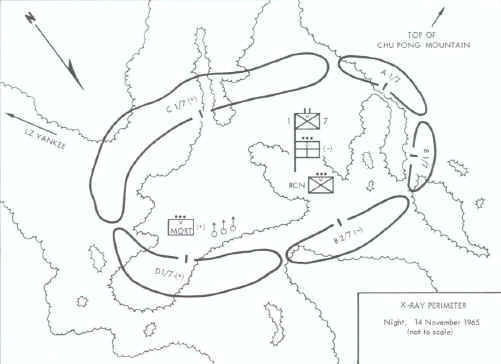
10. The Battle of Ia Drang - This was one of many disastrous airmobile assaults, when infantry helicoptered into a remote area and encountered a larger enemy force with ample ammunition. On Nov 14, 1965, 450 soldiers from the 1st battalion of the 7th Cavalry landed at LZ X-ray and found itself surrounded with little ammunition and no heavy firepower. It was nearly overrun while suffering 79 killed and 121 wounded, and survived only by demanding all available air support in Vietnam. The 7th Cavalry left the area after declaring victory, while survivors pondered the wisdom of an attrition strategy using American foot infantry.
11. Battle for LZ Albany - The 1st battalion of the 7th Cavalry barely survived its now famous 1965 battle in the Ia Drang valley. After saving its 1st battalion, the exhausted 2nd battalion headed for LZ Albany for an aerial extraction. It was in a long column in open terrain when it ran into a concealed NVA battalion, which attacked and shot it to pieces during a bloody battle that claimed the lives of 155 Americans, with 124 wounded.
12. Attack on Marble Mountain - Some 90 Viet Cong sappers infiltrated this huge Marine Corps airfield and destroyed 19 helicopters and damaged 35 (11 of them severely). After this 30 minute rampage, the Viet Cong withdrew, leaving behind 17 dead and 4 wounded. American casualties were 3 killed and 91 wounded.
13. Operation Utah - On Mar 4, 1966, the 2nd battalion of the 7th Marines helicoptered into an area near Quang Ngai to investigate reports of an NVA regiment in the area. They found it dug into fortifications around Hill 50. Their attacked failedand the Marines fell back, but were surprised when the NVA counterattacked. The battalion was in trouble and more Marine units where flown in to join the battle. The enemy withdrew, but only after the Marines lost 98 dead, 278 wounded, with several aircraft destroyed.
14. Battle of Xa Cam My - A battalion from the 1st Infantry Division conducted another "search and destroy" sweep. Its three companies were deployed miles apart in hopes the NVA would attack one. They surrounded and blasted Charlie company, killing 38 and wounding 71 of its 134 soldiers before its other two companies came to the rescue.
15. Operation Paul Revere IV - Two cavalry battalions swept the Cambodian border area in search of the enemy. None were found, until Company C ran into a large force near Duc Co. Details are scarce, but two platoons were overrun and destroyed; only one soldier survived. The American dead were so numerous that they were hauled away in external cargo nets by helicopters.
16. Battle of Cu Nghi - As the 7th Cavalry began Operation Masher, a CH-47 helicopter was shot down. A company of soldiers was flown to the rescue, but they were shot up and pinned down. More units hastily arrived and found two battalions of entrenched NVA fighters firing away at troopers scattered around an area that became known as "the graveyard." Several helicopters where shot down during this three-day melee that left 140 Americans dead and 220 wounded.
17. Battle of Ho Bo Woods - On July 19, 1966, Company A, 1st Bn, 27th Rgt, 25th Division helicoptered into an LZ with 92 soldiers on a search and destroy mission. There is no account of what happened next, except that 25 were killed and 32 wounded as the company fled aboard helicopters, leaving 16 of their dead behind.
18. Operation Crimson Tide - On Oct 18, 1966 the first mission to rescue an American POW was launched. It ended in disaster, with 12 killed, 17 missing, two helicopters shot down, and no prisoners rescued.
19. "Black Friday"- Strike aircraft losses were common, but on December 2, 1966 the U.S. Air Force lost five aircraft and the Navy lost three aircraft to surface to air missiles or anti-aircraft gun fire. Air Force losses included three F-4Cs, one RF-4C, and an F-105. The Navy lost one F-4B and two Douglas A-4C Skyhawks.
20. Attack at Binh Duong - On Feb 26, 1967, a Viet Cong battalion nearly overran Alpha Company, 4th Battalion, 9th Regiment, of the Army's 25th Division. The VC slipped past camp defenses in a surprise attack that killed 19 Americans and several ARVN soldiers.
21. Operation Hickory - In May 1967, U.S. Marines were ordered to cross into the DMZ and destroy the NVA. Several days of frontal assaults killed lots of NVA lodged in fortifications, but also killed 142 Marines and wounded 896 until the marines withdrew after ten days of pointless attacks.
22. Battle near Vinh Huy - During Operation Union II, six rifle companies from the 5th Marines swept the Que Son Valley in search of the enemy. They located a large enemy force 1000 yards ahead across an open rice paddy. After some air and artillery strikes, three companies were ordered to charge across the open ground, and were shot to pieces. The bloodied Marines fell back during this June 2, 1967 battle with 71 KIA and 139 wounded.
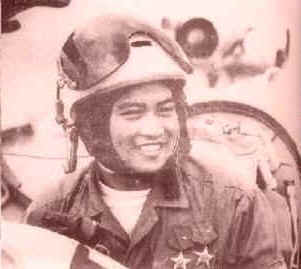 23. August 1967 Air Battle - This war produced two American "Ace" fighter pilots (i.e. five or more aerial shoot downs), yet the North Vietnamese had 16, including Nguyen Van Coc (right), the top Ace of the war with nine kills. On Aug. 23, 1967, Coc led several MIG fighters to intercept a group of 40 American aircraft on a bombing mission. They shot down three American F-4D fighters and one F-105D fighter-bomber without losing a single MIG. Eight American aviators were killed or captured. 23. August 1967 Air Battle - This war produced two American "Ace" fighter pilots (i.e. five or more aerial shoot downs), yet the North Vietnamese had 16, including Nguyen Van Coc (right), the top Ace of the war with nine kills. On Aug. 23, 1967, Coc led several MIG fighters to intercept a group of 40 American aircraft on a bombing mission. They shot down three American F-4D fighters and one F-105D fighter-bomber without losing a single MIG. Eight American aviators were killed or captured.
24. Battle of Prek Klok - During Operation Junction City, Company B from the 1st Battalion/16th Infantry went in search of the NVA. Independent accounts cannot be found, yet the Army's official history notes the company was blasted and nearly surrounded until rescued when another company came to its aid, allowing it to retreat. Company B was extracted by helicopter after suffering 25 dead and 28 wounded. Army Generals declared victory and awarded the company commander a silver star.
25. Kingfisher Battle - In 1967, "Operation Kingfisher" was launched to destroy NVA forces just south of the DMZ. On Sept. 21st, the 2nd battalion, 4th Marines began a "search and destroy" mission and quickly encountered the entrenched 90th NVA regiment. The Marines lacked tank support because recent rains limited road mobility, while the dense vegetation and close proximity of the enemy restricted air and artillery support. After a day-long battle, the Marines had suffered at least 16 dead and 118 wounded while trying to break out of the enemy's kill zone. The battalion withdrew at dusk, although flee may be a better term since 15 dead Marines were left behind. Details are sketchy, but the battalion didn't return to collect its dead until three weeks later. Veterans of the battle state they lost 34 KIA that day.
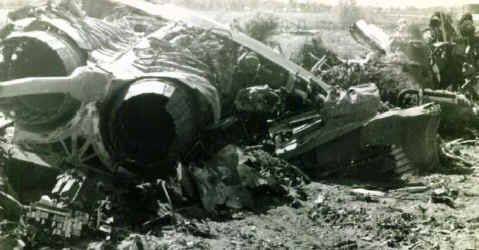 26. Rocket Attack on Da Nang - On July 15, 1967, the NVA conducted a major rocket bombardment on the key U.S. airbase at Da Nang. A total 83 NVA 122mm and 140mm rockets hit the base just before dawn, resulting in 8 killed, 175 wounded, 10 aircraft destroyed and 49 damaged. 26. Rocket Attack on Da Nang - On July 15, 1967, the NVA conducted a major rocket bombardment on the key U.S. airbase at Da Nang. A total 83 NVA 122mm and 140mm rockets hit the base just before dawn, resulting in 8 killed, 175 wounded, 10 aircraft destroyed and 49 damaged.
27. The Battle of Thon Cam Son - In July 1967, the 2nd battalion of the 9th Marines crossed into the DMZ to find the NVA. They found abandoned base camps and bunkers because the NVA had pulled out and moved around behind them. The Marines had to fight their way back home, and more than half the unit bled as itlost 41 killed and 355 wounded.
28. Battle for Nui Ho Khe (Hill 88) - Marines were concerned that enemy units near their big Con Thien base threatened their main supply route. On Sept 10, 1967, the 3rd battalion of the 26th Marines ventured forward to secure Hill 88. It was surprised to encounter an entire NVA regiment, which counterattacked causing a bloody fight in which 3/26 suffered 300 casualties (40% including 37 KIA) and lost several tanks. It withdrew to Hill 48 where it made a successful last stand. While the NVA suffered more causalities, poor intel resulted in this clumsy assault that failed to reach its objective.
29. Slaughter at LZ Margo - The 2nd battalion of the 26th Marines helicoptered into LZ Margo near the DMZ on a standard search and destroy mission. Contact was light over the next three days as units swept the area. On Sept. 16, 1967, the battalion received an order from higher headquarters to withdraw into the small LZ where they had arrived, because a big B-52 air strike was planned in the area. Marines were worried because they were tightly grouped and the ground was rock hard so they couldn't dig in. They knew the NVA kept them under observation and were a perfect target for a mortar barrage. A short time later, hundreds of mortar rounds tore into the tightly packed Marines, killing 30 and wounding nearly 200 until the NVA ran out of ammo.
30. Operation Swift - U.S. Marines fought tough battles along the DMZ when NVA units moved across the border to inflict heavy causalities. Marine Generals sent rifle companies with ~140 Marines to search for and destroy the NVA intruders with artillery and airpower. This was effective, but larger NVA units sometimes trapped them in kill zones. In September 1967, they ambushed two Marine companies in the Que Son Valley. Operation Swift was launched to save them from destruction, but the two companies sent to the rescue were mauled. The end result was 127 Marines killed and 362 wounded. The NVA suffered more casualties, but accomplished their mission and withdrew northward.
31. Convoy Ambush near An Khe - In Sept 1967, 39 trucks from the U.S. Army's 8th Transportation Group were returning home after delivering supplies to Plekiu. They were escorted by two gun jeeps in an area considered mostly secure by the presence of the 1st Calvary Division. A Viet Cong company ambushed this big convoy in broad daylight. Seven Americans were killed, 17 wounded, and 30 vehicles were damaged or destroyed. The VC quickly disappeared and no evidence of enemy casualties were found.
32. Task Force Black Mauled - Half of the 1st Battalion/501st Regiment/173rd Airborne Brigade went in search for the NVA who had recently attacked their base. They ran into two NVA battalions, who shot them up from three directions. The rest of the battalion was sent to save them, and withdrew with 20 dead, 154 wounded, and two missing.
33. Battle near Ap Bac - The U.S. Army's 9th Infantry Division operated in the marshy delta region of southern Vietnam, often with Navy river patrol boats. During a routine battalion sweep, Alpha company from the 2nd Brigade crossed an open rice paddy and encountered Viet Cong ready to fight from concrete bunkers. Most of the company was wiped out in the first five minutes, and rest pinned down in the kill zone for hours until other companies arrived. This battle left 40 American dead and 140 wounded.
34. Battle for Hill 861 - In 1967, Bravo Company, 1st battalion, 9th Marines went to search for caves on Hill 861. After a skirmish, the company attacked up the hill without knowing that it had encountered a large enemy force. Most of Bravo waswiped out and the survivors were pinned down until rescued by Kilo company that night.
35. Overrun in Happy Valley - During the first two weeks of 1968, 69 soldiers from the 196th Infantry Brigade died in heavy fighting in the Hiep Duc Valley, Quang Tin Province. On January 9-10, Alpha and Delta companies from its 3/21 Infantry battalion were overrun. The Delta company commander and 27 men were killed. Dozens were wounded and eight Americanstaken prisoner as survivors held out in small groups overnight until rescued the following day.
36. Ambush at Hoc Mon - In 1968, 92 American soldiers of C Company, 4th Battalion, 9th Infantry Regiment, 25th Division began a search-and-destroy mission near Saigon. They were looking for a Viet Cong force that had been firing rockets into their Tan Son Nhut Air Base. As they rushed along a road without flank security to catch up with their battalion, they ran intoan ambush. Within eight minutes, 49 American soldiers were dead or dying, and 29 were wounded.
37. Battle of Kham Duc - This large Special Forces camp was abandoned as it was overrun, despite reinforcement by an American infantry battalion from the 196th brigade. Hundreds of friendly civilians and militiamen were left behind as Americans escaped aboard helicopters and C-130s.
38. Khe Sahn Village Overrun - A large village three kilometers from the famous Khe Sahn military base was defended by 160 local troops, plus 15 American advisors and heavy artillery from the base. In January 1968, it was attacked by a ~300-man NVA battalion. Reinforcements were dispatched aboard nine UH-1 helicopters, but were wiped out after landing near the NVA, along with one helicopter. A small ground rescue force from the nearby base was repulsed, while the survivors from the village assault fled to the Khe Sahn base.
39. Battle of the Slopes - A company of American paratroopers was searching for the NVA in rough terrain when it wasattacked by a large force. It suffered 76 KIA as it was nearly overrun, with two platoons wiped out. Newly arrived airborne officers had ignored warnings that they should maneuver as battalions because the NVA units in that area were larger, aggressive, and would attack a lone rifle company.
40. Battle of No Goi Island - The Viet Cong liked to fortify ambush sites and wait for the Americans to discover them. During Operation Allen Brook, three battalions of Marines swept through No Goi Island and found lots of Viet Cong ready to fight from bunkers near the village of Le Bac. During several days of bloody assaults, the Marines suffered 138 killed and 686 wounded (576 seriously) before the surviving Viet Cong fled. The extreme heat resulted in another 283 Marines evacuated due to heat stroke. Having suffered 50% causalities, Allen Brook was halted until fresh Marine units arrived.
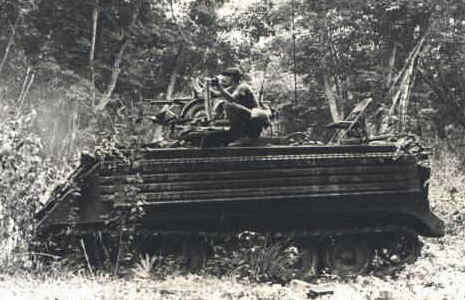 41. Battle at the Ben Cui Rubber Plantation - American mechanized units had the firepower and mobility to rout any NVA force. An exception occurred in 1968 during a routine road sweep when Company C, 1st Bn (Mech), 25th Division ran into an aggressive NVA regiment. It quickly lost 5 APCs (right), with 17 killed (leaving just one officer), and two dozen wounded before it retreated to its home base, leaving most of its dead behind. 41. Battle at the Ben Cui Rubber Plantation - American mechanized units had the firepower and mobility to rout any NVA force. An exception occurred in 1968 during a routine road sweep when Company C, 1st Bn (Mech), 25th Division ran into an aggressive NVA regiment. It quickly lost 5 APCs (right), with 17 killed (leaving just one officer), and two dozen wounded before it retreated to its home base, leaving most of its dead behind.
42. Battle of Dai Do - A Marine Corps infantry battalion was mauled and forced to retreat after a disorganized attempt to dislodge a large North Vietnamese force near the DMZ. The Marines suffered 81 KIA and 397 wounded while killing hundreds of NVA. Accounts of this action are hidden within reports of operations in region of Dong Ha.
43. Battle of Ong Thanh - After minor enemy contact the previous day, a battalion commander led 155 American soldiers single-file into the bush to destroy the enemy. They ran into an NVA regiment with some 1400 men. Alpha company was wiped out in 20 minutes, and by sundown, 59 American soldiers lay dead with 75 wounded. An excellent documentary is on-line where survivors describe the onslaught.
44. Operation Delaware - In this April 1968 offensive, the U.S. Army learned that mountain jungles allow concealed anti-aircraft weapons to easily shoot down low-flying aircraft. Units of the 1st Cavalry Division helicoptered into rugged terrain and killed hundreds of NVA as they withdrew to Laos. However, the NVA shot down a C-130 transport, two fighter-bombers, eight large helicopters, nearly two dozen UH-1 helicopters, and seriously damaged three dozen other helicopters, whose crashes left 47 Americans MIA. The NVA also killed 142 Americans, wounded 731, and returned to the area as the 1st Cav withdrew after three weeks of fighting.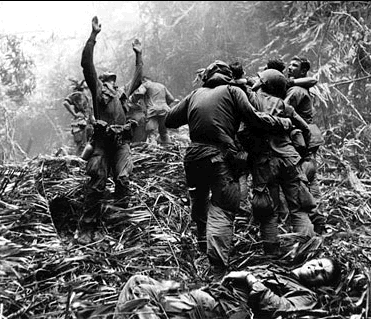
45. Operation Houston II - In May 1968, as Mike company from the 3rd Battalion, 5th Marines moved up a ridge called Hill 1192, they wandered into an NVA base camp and were shot to pieces with 14 killed and dozens wounded. Three helicopters were shot down attempting to rescue wounded Marines. The surviving marines remained pinned down and bleeding for several days until rescued by another company.
46. Battle for LZ Loon - The Marines landed on Hill 672 to build an artillery fire support base. The NVA objected, and sent a battalion to attack the two undermanned companies from the 4th Marines. After a day of heavy fightingthat included NVA artillery fire, half the Marines were casualties. It was decided to abandon the hill by helicopter, leaving most of the dead behind. One helicopter was shot down during the extraction after this battle that left 41 Marines dead and over 100 wounded.
47. Battle of Two July - The 1st battalion, 9th Marines went up a road to find the NVA, and found them. Information is vague, but Bravo Company was overrun and the remnants of Alpha Company pulled back, leaving a combined 53 known dead, 190 wounded, and 34 missing.
48. Battle for Hill 875 - or the Siege of Dak To - The 2nd battalion of the 173rd Airborne Brigade with over 300 soldiers advanced up this hill with artillery and air support. They encountered stiff resistance and suffered heavy causalities, but were shocked when the NVA counterattacked. The battalion formed a tight defensive perimeter and was surrounded while chaos ensued after a Marine Corps' jet dropped a 500 lbs bomb on their position. The brigade's 4th battalion arrived the following day and broke the siege, then advanced to secure the hill after the NVA withdrew. Of the 570 US troops involved in the attack on the hill, 340 became casualties.
49. Battle for Firebase Mary Ann - Some 50 NVA sappers attacked at night, then slipped away. The U.S. Army suffered 33 killed and 83 wounded among the 231 soldiers at the base. Their brigade commander was relieved of duty and the firebase closed.
50. Battle of Ngok Tavak - On May 10, 1968, an NVA battalion attacked an old French fort manned by a 150 Chinese mercenaries led by eight American Special Force troopers and three Australian advisors, plus 33 U.S. Marine Corps artillerymen with two 105mm howitzers. Helicopters flew in 45 more Marines as reinforcements and evacuated casualties during the day-long battle. The fort was overrun and everyone fled, with some literally clinging to the skids of a helicopter. At least 32 Americans were killed and several helicopters shot down. A book about this lost battle was published, and a short account is here. 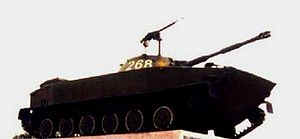
51. Battle of Lang Vei - In 1968, the NVA surprised everyone by using light tanks to overrun the well-defended U.S. Special Forces camp at Lang Vei, despite heavy American artillery and air support. Most of the 500 defending Montagnards were killed. Losses among the 24 Americans were 7 KIA, 3 POWs, and 11 wounded.
52. Ambush near Khe Sahn - On Feb 25, 1968, a 41-man platoon from the 26th Marines was sent on a short patrol "outside the wire" to test the strength of NVA units near Khe Sahn village. They pursed three VC scouts who led them into an ambush. The platoon was wiped out during a three-hour battle that left 31 Marines KIA, one taken prisoner, while nine Marines escaped back to their base.
53. Battle of Thon La Chu - The 1968 Tet offensive caught the U.S. military by surprise, and the NVA captured the city of Hue. During this chaos, the cavalry was sent to save the Marines as the Army's lightly armed 2nd battalion/12th Cavalry flew to the rescue in helicopters. After landing, it charged across an open rice paddy without its customary artillery or air support and suffered considerable casualties. The enemy had superior numbers, superior positions, and enough firepower to encircle the battalion. With 60% casualties, no supplies and little air support, the battalion was lucky to slip away at night and flee total destruction.
54. Fall of A Shau - The NVA sent five battalions to overrun this large Special Forces camp near the Vietnam border. It was defended by 380 local troops led by 17 Americans. After a day of heavy fighting, the defenders faced defeat. Five of the Americans fled by helicopter leaving behind 8 American dead and 5 missing. Most of the local troops were left behind. Another seven Americans died providing air support.
55. Battle near Hill 689 - On April 16, 1968 a Marine Corps company began a patrol near its Khe Sahn base. It wandered into tall vegetation and was decimated by concealed NVA soldiers in bunkers. Two more companies from 1st Battalion, 9th Marines were dispatched to save them, but they became ensnarled in this confusing battle in which dead and wounded Marines were left behind as the battalion retreated back to Khe Sahn in disarray. This resulted in 41 KIA, 32 wounded, with 2 of 15 MIAs later rescued by helicopters. The battalion commander was relieved of duty.
56. Attack on Nui Ba Den - A hundred NVA launched a surprise assault on a poorly defended American signal intelligence station atop Nui Ba Den mountain. The base was quickly overrun and burned to the ground. The NVA killed 24 Americans, wounded 35, and 2 were taken prisoner as the NVA withdrew. Most Americans survived in one bunker or by fleeing the base and hiding among boulders. Some refer to the battle as a massacre because the attack was so sudden that many soldiers had no rifles to defend themselves.
57. Ambush at Ap Nhi - On Aug 25, 1968, a resupply convoy of 81 trucks from the 48th Transportation Group departed Long Binh. Seven drivers lost their lives in an ambush, 10 were wounded, and two taken prisoner as most trucks were destroyed. Drivers held on with air support until a rescue force arrived nine hours later after suffering 23 killed and 35 wounded.
58. Battle of Lima Site 85 - The USAF established a secret navigation site atop a remote mountain in Laos to allow all-weather bombing northward. The NVA learned of this and surprised the Americans with their mountain climbing skills. The site wasoverrun as seven Americans escaped aboard a rescue helicopter, leaving 12 dead airmen behind while their 42 supporting CIA funded Asian mercenary soldiers perished.
59. Battle of Hamburger Hill - A battalion from the 101st Airborne (3/187) encountered stiff resistance on rugged Hill 937. It was unable to capture the summit due to steep, dense terrain, well-built enemy bunkers, a deadly friendly fire incident, and fierce NVA defenders. A second battalion (1/506) was sent to attack from the south, but it suffered the same fate. Small NVA counterattacks caused confusion and several more deadly friendly fire incidents. Aggressive American commanders ordered repeated attacks for three days until 3/187 had lost 60% of its men and withdrew, while 1/506 remained pinned down.
More battalions eventually arrived to join the attack. ARVN scouts reported the NVA had left the mountain, nevertheless, a two hour aerial bombardment commenced before the American battalions walked up Hill 937 to proclaim victory, and then withdrew a few days later. These frontal assaults resulted in 84 American dead with 480 wounded, and the loss of several helicopters, leading to the nickname "Hamburger Hill" where GIs were ground up. Given the heavy causalities suffered for nothing gained, this was a defeat.
60. LZ East Overrun - On June 11, 1969, the NVA overran a small base called LZ East, killing 17 soldiers of the 169th Infantry Brigade and wounding 34 until reinforcements arrived to retake the base.
61. Attack on Cu Chi - In February 1969, enemy commandos attacked the large U.S. Army airfield at Cu Chi. They destroyed nine large CH-47 helicopters, heavily damaged three more, and caused minor damage to two others. (photos are here) 14 Americans were killed and 29 wounded during the three-hour battle.
62. Battle of Plei Trap - During Operation Wayne Grey, 115 soldiers from Alpha Company of the 4th Infantry Division helicoptered into a remote area in search of the NVA. They found lots of them, and suffered 35 KIA, 51 WIA, and 7 MIA as they were overrun. A lieutenant who heroically led a retreat of the survivors was almost court-martialed by senior officers trying to cover-up this disaster.
63. Firebase Airborne Overrun - There are several short, vague accounts about how this artillery firebase was overrun on May 13, 1969. One veteran believes it was bait to draw the NVA into combat. VC sappers slipped inside its weak defenses and exploded the artillery ammunition dump, killing a dozen and causing confusion. The NVA swept through the base at night killing and wounding most defenders and destroying its big guns. Many Americans managed to hide until the NVA left before dawn, so the base was never officially captured. However, it was wrecked and abandoned.
64. Operation Lam Son 719 - In early 1971, a major offensive was launched into Laos to sever the Ho Chi Minh Trail supply line. The United States provided logistical, aerial, and artillery support to the operation. American ground forces were prohibited by Congress from entering Laotian territory, but supported the offensive by rebuilding the airfield at Khe Sanh. South Vietnam provided its best units for this month long offensive, and the Pentagon was confident that American firepower would guarantee victory. After a series of lost battles, the South Vietnamese retreated back home after losing nearly 1,600 men. The U.S. Army lost 215 men killed, 1,149 wounded, 38 missing, and lost 108 helicopters while 7 American fighter-bombers were shot down.
65. Battle near FSB Professional - The NVA shot down a big CH-47 helicopter as it delivered supplies to this fire support base. Company A of the Army's 1/46 Infantry with 91 soldiers was sent outside the wire to eliminate the threat. It was mauled during a 35-hour battle, and its 47 surviving soldiers fled, leaving their dead and some wounded behind.
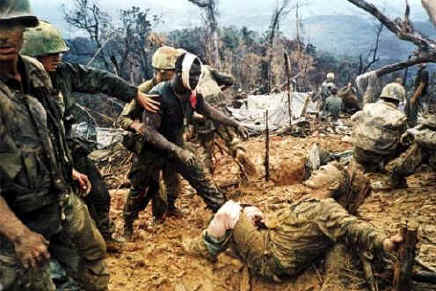 66. Attack on FSB Henderson - As American troops withdrew from Vietnam, NVA sappers attacked this artillery base. They charged through the hilltop killing 27 soldiers from the 101st division and wounding 40. Most of the howitzers and artillery ammunition were destroyed by satchel charges before the NVA disappeared into the night. 66. Attack on FSB Henderson - As American troops withdrew from Vietnam, NVA sappers attacked this artillery base. They charged through the hilltop killing 27 soldiers from the 101st division and wounding 40. Most of the howitzers and artillery ammunition were destroyed by satchel charges before the NVA disappeared into the night.
67. Battle for Firebase Ripcord - American Generals made one final attempt to block the Ho Chi Minh trail, and found more NVA troops than expected. As the NVA assaulted remote Fire Support Base Ripcord, Generals decided to evacuate the base. Four American battalions from the 3rd Brigade, 101st Division conducted a fighting aerial evacuation that lasted 23 days, with the loss of at least 75 American KIA and 463 wounded. Dozens of helicopters were shot down or damaged, while several soldiers and all major items of equipment were left behind.
68. June 1972 Air Battle - While superior aircraft of the USA won most air battles, the smaller MIGs flown by North Vietnamese pilots won many battles, which remain mostly hidden from history. An interesting website that documents combat losses sheds some light. It notes that MIGs shot down five American F-4 fighters on June 27, 1972, and cross referencing the date for American air victories shows no MIG kills.
| Date | Unit | Aircraft | Pilot | Weapon | Victim |
|
|---|
| 27Jun72 | 921 | MiG-21 | Nguyen Duc Nhu | R-3S | F-4E | USAF (Sullivan/Francis) |
| 27Jun72 | 927 | MiG-21MF | Ngo Duy Thu | R-3S | F-4E | USAF (Dam) |
| 27Jun72 | 927 | MiG-21MF | Nguyen Doc Soat | R-3S | F-4E (67-0248) | 308TFS/USAF (Cerak/Dingee) |
| 27Jun72 | 927 | MiG-21MF | Pham Phu Thai | R-3S | F-4E (69-7271) | 366TFW/USAF (Aikman/Hanton) |
| 27Jun72 | 927 | MiG-21MF | Bui Thanh Liem | R-3S | F-4E (69-7296)) | 366TFW/USAF (Miller/McDow |
It would be interesting to know what happened that day, but the USAF chose not to document this air battle. Vietnamese pilots were more experienced, more familiar with the airspace, flew shorter missions, and could choose their fights, so they sometimes surprised American pilots.
69. Day Three of Operation Linebacker II - Of the 99 huge B-52 bombers in this Dec. 20, 1972 bombing raid on targets around Hanoi, eight were lost to enemy fire, resulting in 36 airmen killed or captured. The Strategic Air Command (SAC) blamed the tactics utilized (flight paths, altitudes, formations, timing, etc.), which had not varied from raids the two previous days. Air Force historian Earl Tilford noted: "Years of dropping bombs on undefended jungle and the routines of planning for nuclear war had fostered a mind-set within the SAC command that nearly led to disaster."
70. Battle of Koh Tang - This was the last battle of the war. In 1975, Khmer Rouge patrol boats seized the container ship, USS Mayaquez, which was the last American ship to leave Saigon. Surveillance indicated the ship anchored at Koh Tang island, so the U.S. Marine Corps assembled a rescue force. Most helicopters were shot up while landing Marines on the island and were disabled or crashed. The Marines faced stiff enemy resistance and were pinned down. It was then discovered that the Mayaquez crew had already been freed on a small boat, so the landing force was recalled. A total of 18 GIs were killed and 41 wounded in the rescue attempt, while 23 airmen perished in a helicopter accident during the preparation stage.
By Carlton Meyer
Source: http://www.g2mil.com/lost_vietnam.htm |




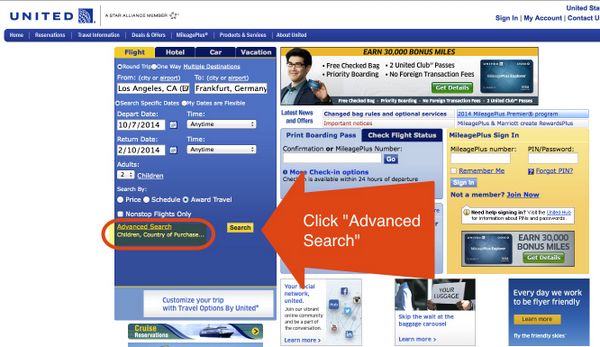
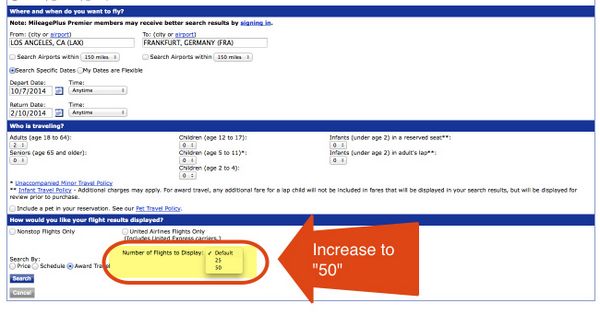
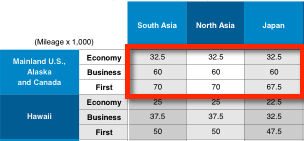
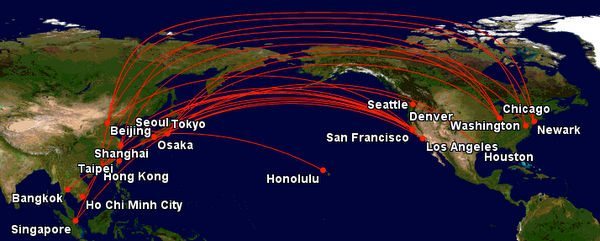
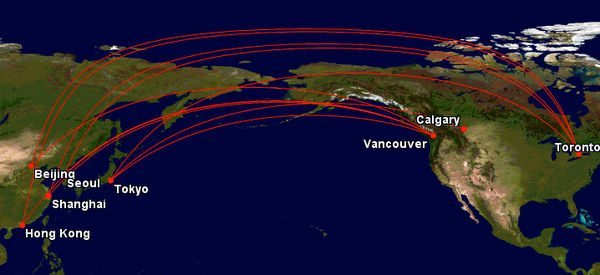
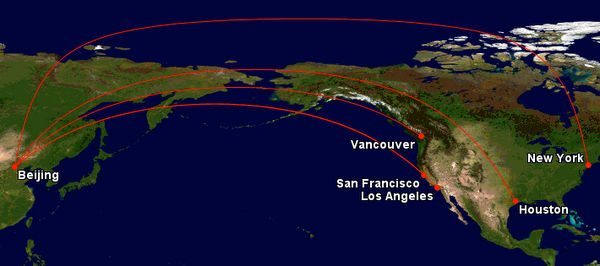

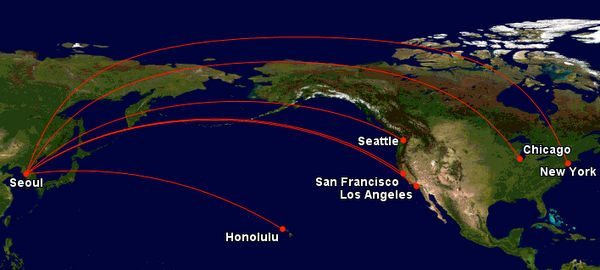
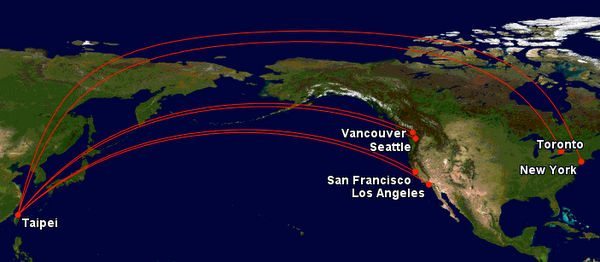
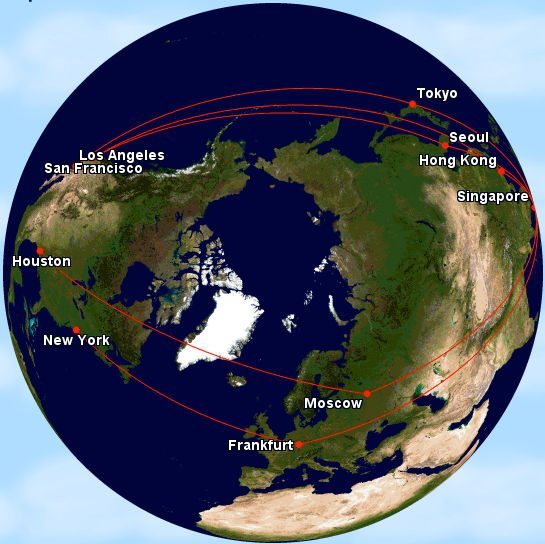
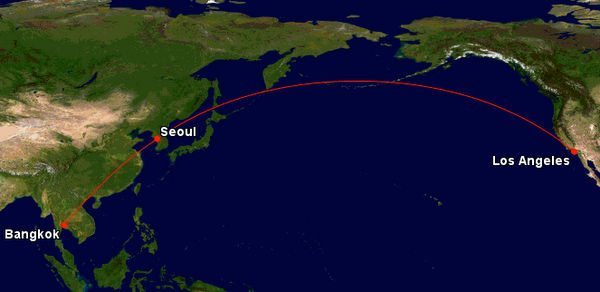

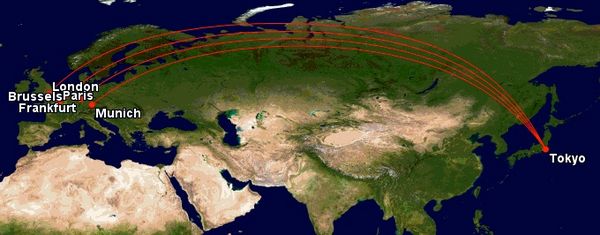
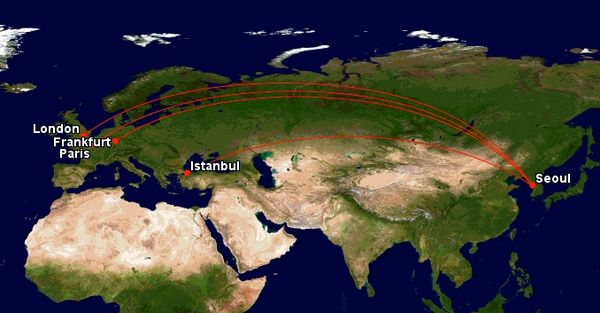
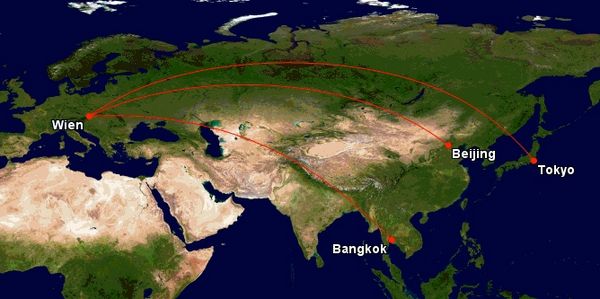
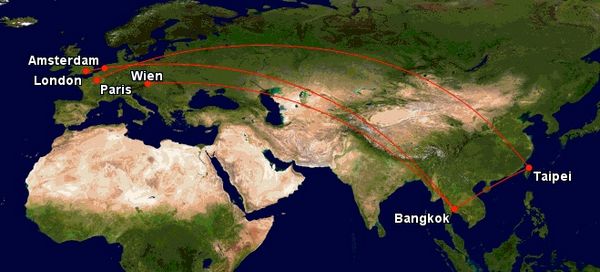

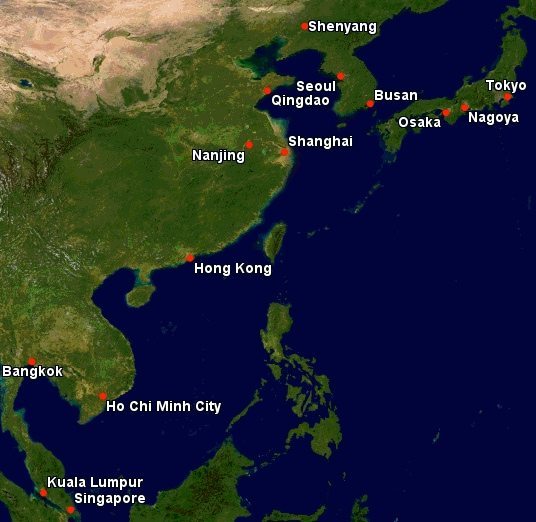

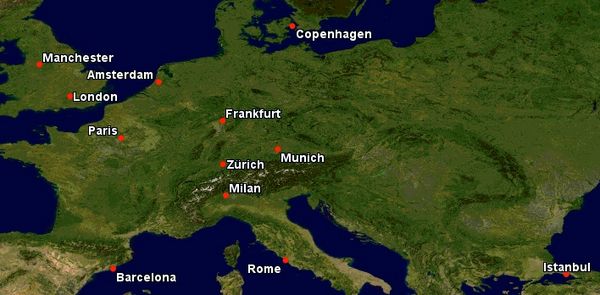
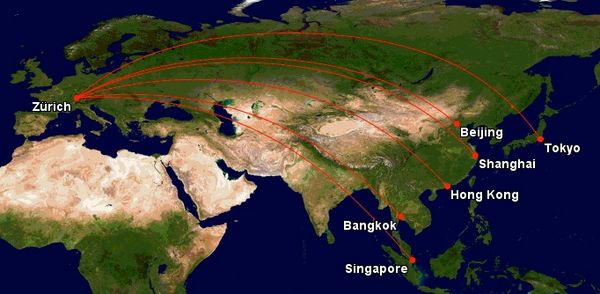
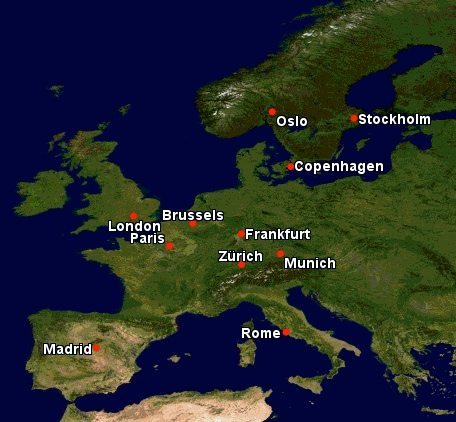



 2. Battle of Ap Bac -
2. Battle of Ap Bac -
 23. August 1967 Air Battle
23. August 1967 Air Battle 26. Rocket Attack on Da Nang
26. Rocket Attack on Da Nang 41. Battle at the Ben Cui Rubber Plantation -
41. Battle at the Ben Cui Rubber Plantation -

